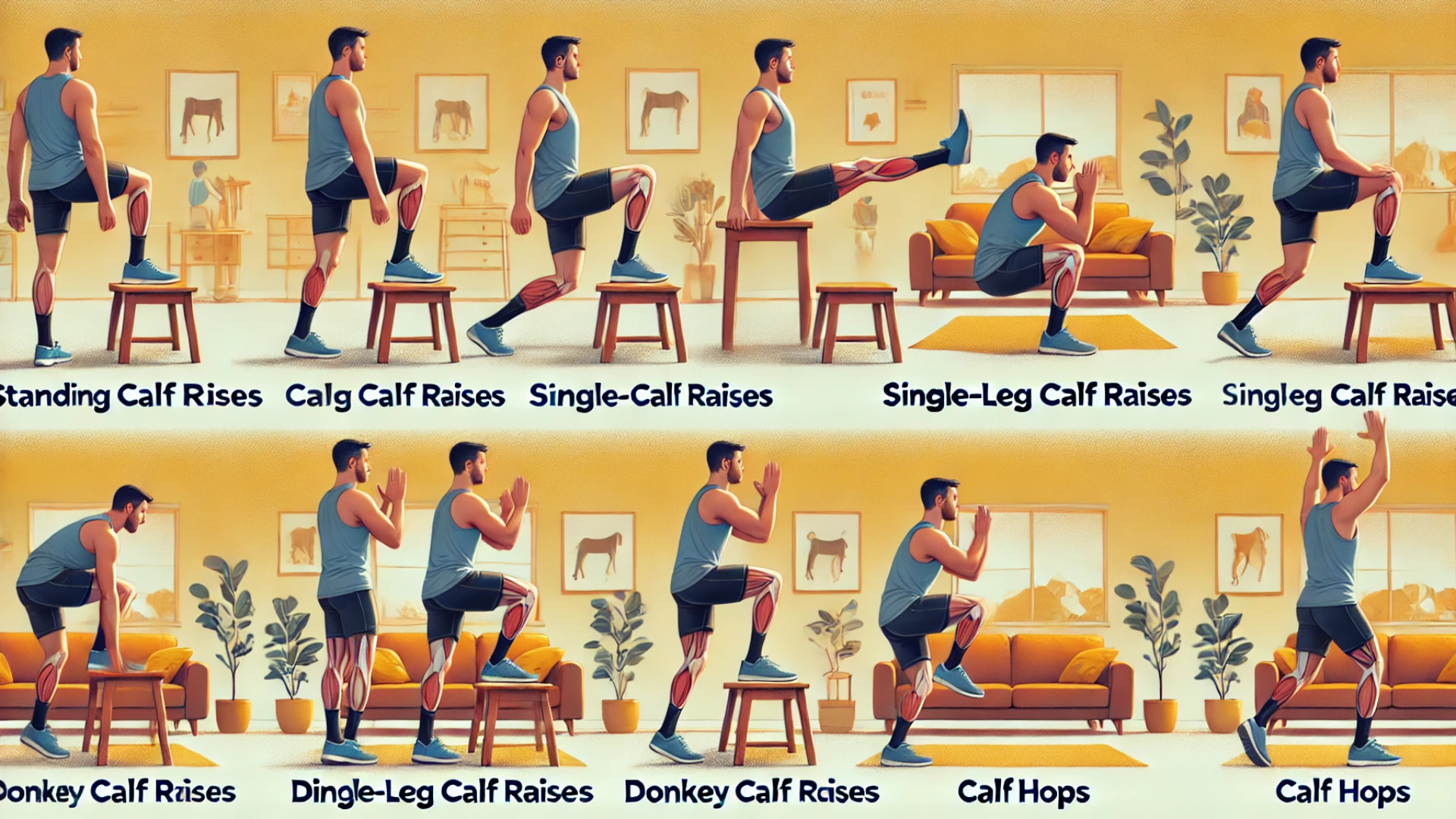
Why Train Calves?
First things first, why should you even bother training your calves? The calves play a crucial role in your daily activities, from walking and running to jumping and standing. Strong calves not only improve your athletic performance but also help prevent injuries, especially in your ankles and knees. Plus, well-developed calves add to the overall aesthetics of your legs.
The Basics: Understanding Your Calf Muscles
Before jumping into the exercises, it’s important to understand the muscles you’re working on. The calf is mainly made up of two muscles:
Gastrocnemius: This is the larger, more prominent muscle that gives your calf its shape. It’s responsible for movements like jumping and running.
Soleus: This muscle lies underneath the gastrocnemius and is crucial for activities that involve standing and walking. It’s a bit less visible but just as important.
Standing Calf Raises
How to Do It:
- Stand straight with your feet hip-width apart.
- Slowly raise your heels off the ground as high as you can, balancing on the balls of your feet.
- Hold this position for a second and then lower your heels back down.
- Repeat for 15-20 reps.
Tips:
- Keep your movements slow and controlled to engage the muscles effectively.
- Focus on squeezing your calves at the top of the movement.
Why It Works:
Standing calf raises target both the gastrocnemius and soleus, making them a great all-around calf exercise. Plus, they’re easy to do anywhere!
Single-Leg Calf Raises
How to Do It:
- Stand on one leg, with your other foot slightly off the ground.
- Slowly raise your heel off the ground as high as possible, balancing on the ball of your foot.
- Lower your heel back down and repeat for 12-15 reps.
- Switch legs and repeat.
Tips:
- Use a wall or chair for balance if needed.
- Make sure to perform the exercise slowly for maximum benefit.
Why It Works:
This variation adds more intensity since you’re lifting your entire body weight on one leg. It’s fantastic for building strength and improving balance.
Seated Calf Raises
How to Do It:
- Sit on a chair with your feet flat on the floor.
- Place something heavy (like a book or a bag) on your knees for added resistance, if available.
- Raise your heels as high as possible, then lower them back down.
- Repeat for 15-20 reps.
Tips:
- If you don’t have anything heavy, just use your body weight.
- Focus on keeping your movements controlled.
Why It Works:
Seated calf raises primarily target the soleus muscle, which is crucial for endurance activities like running and walking.
Donkey Calf Raises
How to Do It:
- Stand with your feet shoulder-width apart, and bend forward at the hips to place your hands on a chair or table.
- Keep your legs straight and raise your heels as high as possible.
- Lower your heels back down and repeat for 15-20 reps.
Tips:
- Engage your core to maintain balance.
- Keep your legs straight throughout the exercise.
Why It Works:
Donkey calf raises emphasize the gastrocnemius muscle and allow for a greater range of motion, making them more challenging.
Calf Hops
How to Do It:
- Stand with your feet together.
- Perform small hops, pushing off with your toes and landing softly on the balls of your feet.
- Continue hopping for 20-30 seconds.
Tips:
- Keep your knees slightly bent to reduce impact.
- Focus on pushing off with your calves, not your thighs.
Why It Works:
Calf hops add an element of plyometrics (explosive movement) to your routine, which helps in building both strength and endurance.
Stair Calf Raises
How to Do It:
- Stand on a step or any elevated surface with your heels hanging off the edge.
- Slowly raise your heels as high as possible, then lower them below the level of the step.
- Repeat for 15-20 reps.
Tips:
- Use a railing for balance if needed.
- Lower your heels as much as possible to stretch the calves before raising them.
Why It Works:
This exercise offers a deeper stretch, which helps in improving flexibility and muscle growth.
Its here Best Exercises for Biceps and Triceps
Final Thoughts: Consistency is Key
When it comes to training your calves, consistency is everything. Aim to incorporate these exercises into your routine 2-3 times a week. Remember, calves are often used to a lot of activity, so don’t be afraid to push yourself a little harder as you progress.
FAQs
Q1: How often should I train my calves?
A1: Ideally, 2-3 times a week is enough to see noticeable results.
Q2: Can I do these exercises every day?
A2: It’s better to give your muscles time to recover, so sticking to 2-3 times a week is recommended.
Q3: How long will it take to see results?
A3: With consistent effort, you should start noticing strength improvements in about 4-6 weeks.
Q4: Are these exercises suitable for beginners?
A4: Absolutely! These exercises are beginner-friendly and can be adjusted to your fitness level.
Q5: Do I need to stretch after these exercises?
A5: Yes, stretching your calves after the workout helps improve flexibility and prevent soreness.

